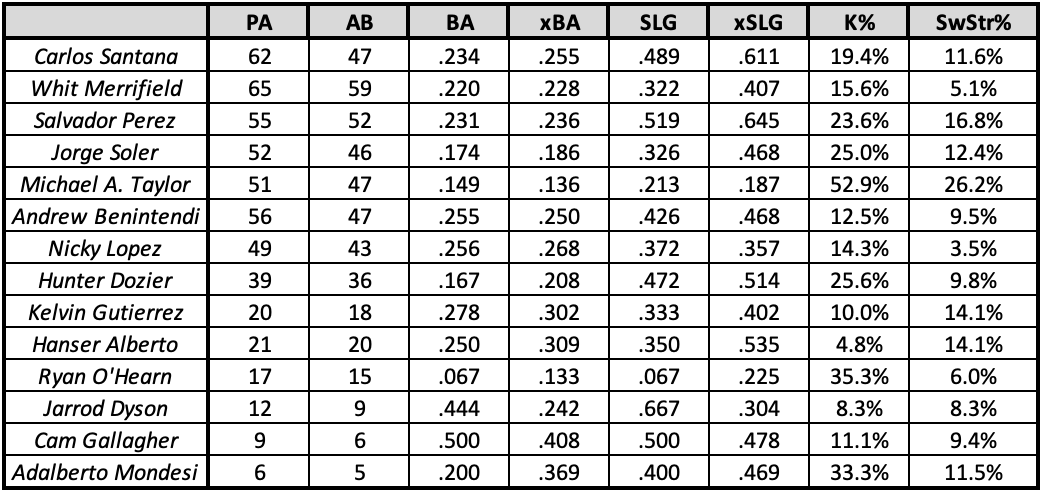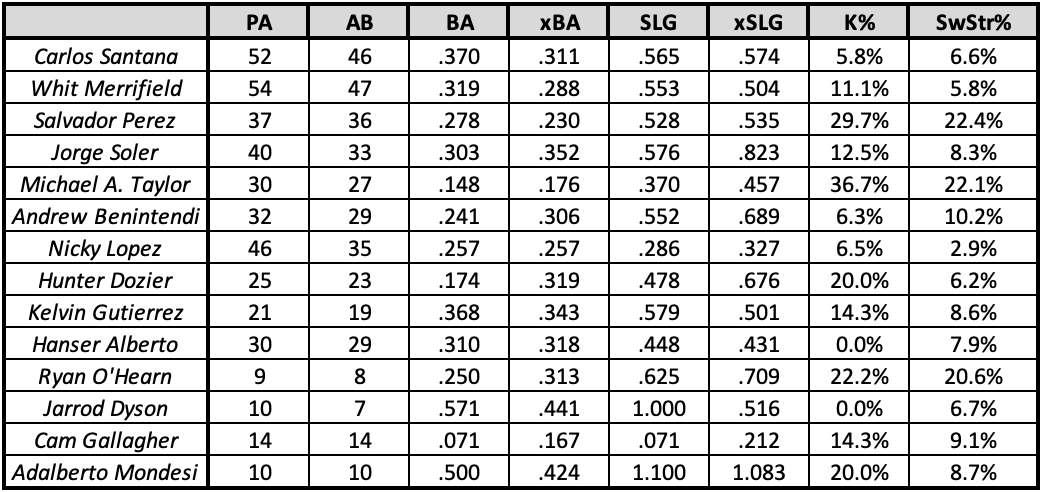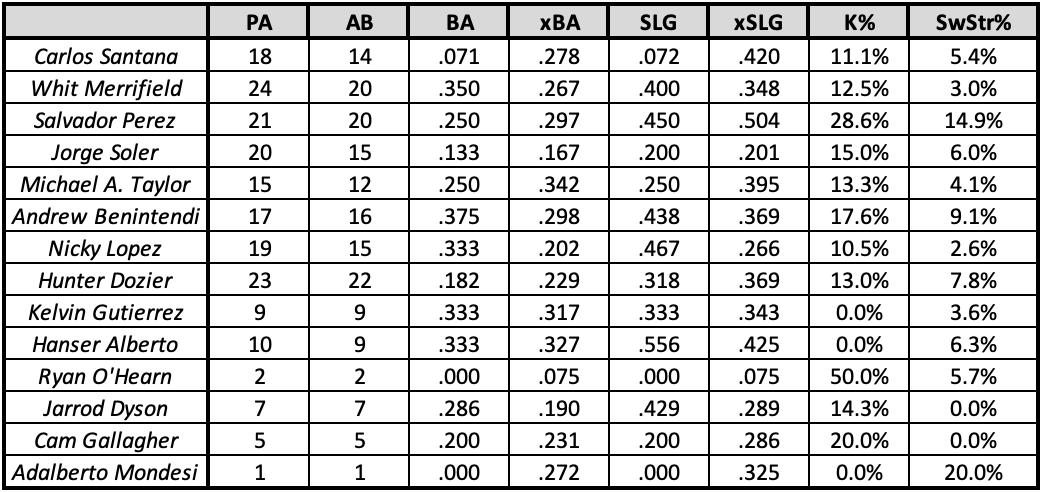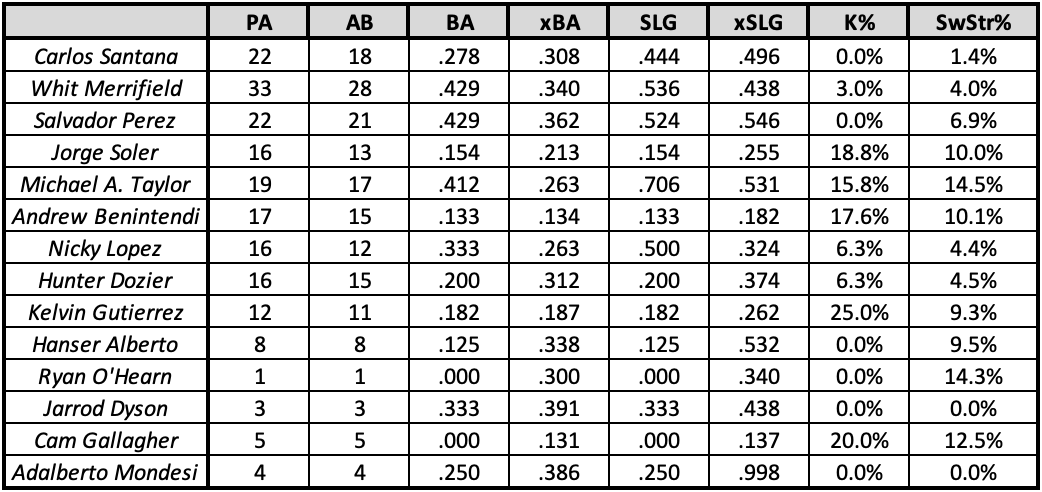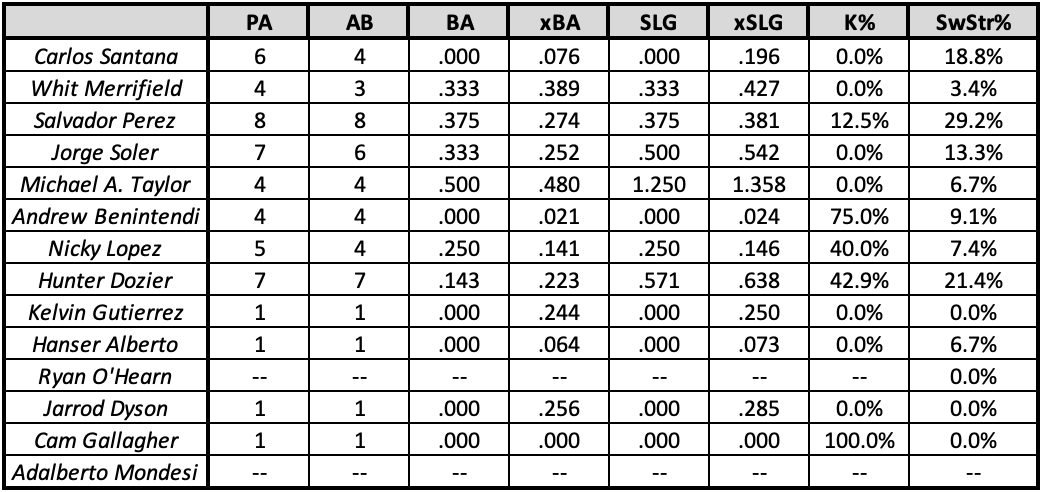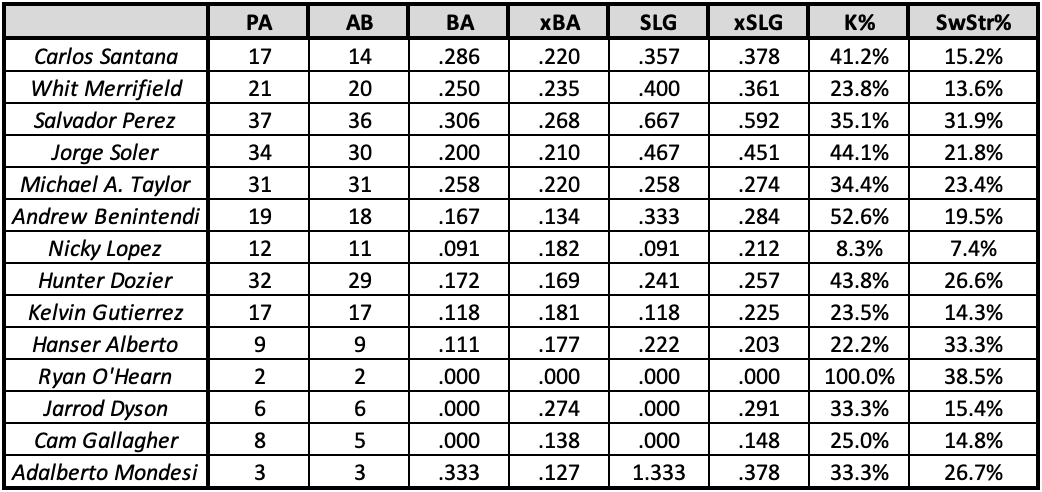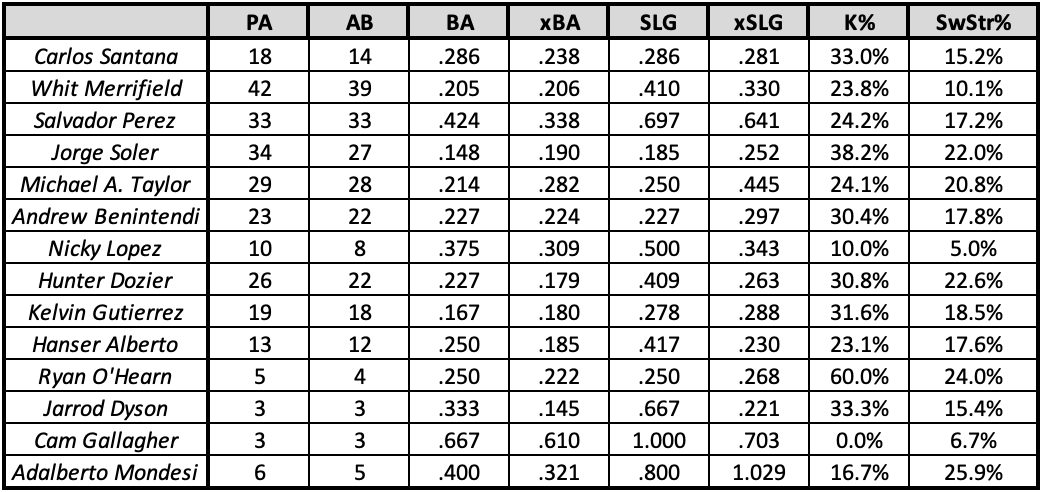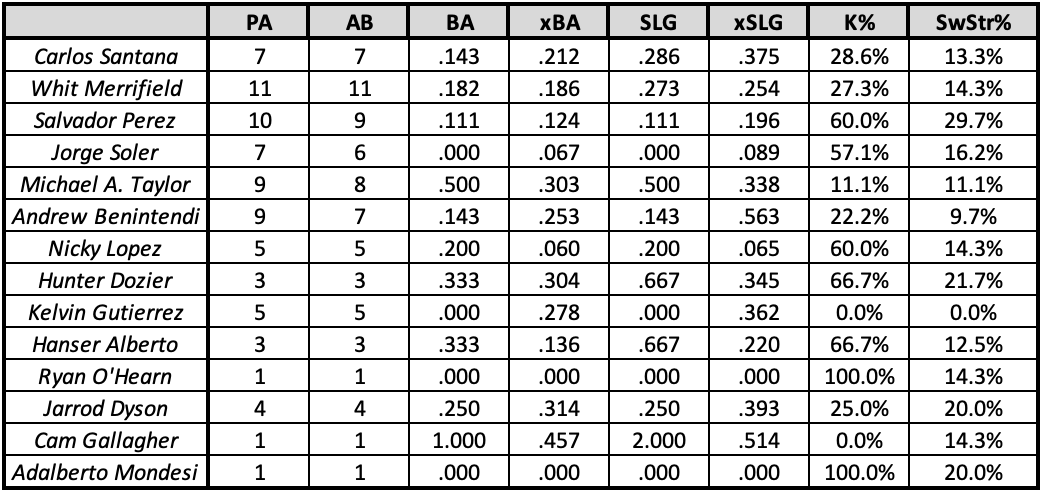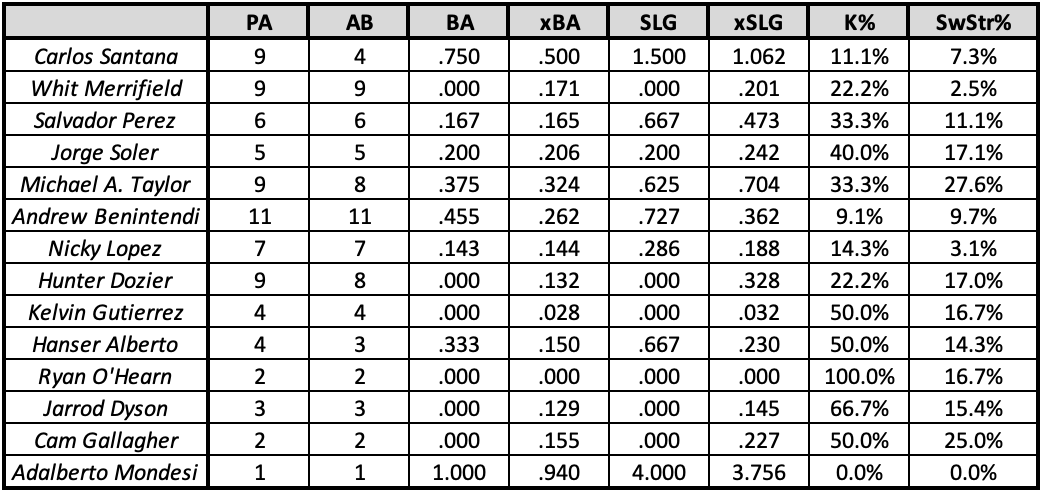Sticky Situations
Yesterday was the first day for sticky stuff enforcement on the pitchers, so let's see how it might impact the Royals.
By now you’ve already heard that Major League Baseball has decided enough is enough on the sticky stuff used by pitchers. And that means everything but rosin. Pitchers cannot use anything to add more stick to the ball other than the rosin that’s out on the back of the mound. They can wear sunscreen if it’s a day game, but if the game starts at night or they’re in a dome, that’s grounds for trouble.
It’s a nuanced situation really. While the sticky stuff has gotten ridiculous over the last few years, the league has not only looked the other way but in some cases likely encouraged it. Pitchers have complained with how slick the ball is without any help and are both concerned about their control and their health. Tyler Glasnow, now on the 60-day IL for the Rays blames the lack of any substances on his injury that has him on the shelf for at least two months. At first I thought that was crazy, but he had a very thoughtful answer that made me reconsider that.
I recently caught a foul ball at a game and had an older ball from a few years ago that I was able to compare it to, and it really is crazy how different it feels from even as recently as 2013 or 2014. The seams are lower and it’s just tough to really dig your fingers into the ball because it is so slick. I can see how pitchers might have an issue with that.
The end result might be what brings the game back to more well rounded eventually. If pitchers are having a harder time controlling the ball, maybe they won’t go max effort every single pitch. If they’re not going max effort every single pitch, there are two things that happen. For one, they likely aren’t throwing as hard, which makes it a little more possible for opponents to get bat on the ball. For another, starters not going max effort might mean that they’re able to get deeper into games. Of course, if hitters have more of an advantage, they might get knocked out of games whether they’re tired or not. Either way, I think both these impacts wouldn’t be felt until at least next season and maybe later than that.
The other, more obvious, impact is coming with the decrease of spin rates. Trevor Bauer started the thought exercise on this a few years ago when he sent the tweet you see below in 2018.

The assumption was him talking about the Astros, of course, who traded for Gerrit Cole and then he went from a fine pitcher to GERRIT COLE. Bauer has talked a few times about how the only way a pitcher can bump his spin rate was by using a substance that was against the rules in baseball. And then after the 2019 season, Bauer’s fastball spin rate jumped from 2410 rpm to 2779 rpm in the year he won the National League Cy Young for the Reds. His cutter jumped from 2640 rpm to 2908 rpm, his slider from 2737 to 2951 and his curve from 2548 to 2926.
Well isn’t that curious?!?!
This isn’t to say that all spin rate increases and decreases are due to either using or not using the sticky stuff, but Bauer’s numbers paint the picture of someone either trying to prove a point or someone tired of others benefiting from something that wasn’t being policed in any way.
While I think the league cracking down on this starting in the middle of the season is kind of silly, they did mention this before the season and basically said that if everyone was on their best behavior, none of this would happen. Of course, not everyone was. So here we are, on the verge of maybe some of the biggest names in baseball finding themselves suspended for 10 games if they can’t quit or finding their spin rates, control and command dropping to the point that they aren’t nearly as effective.
And it probably will lead to a bit of a witch hunt as well, that I doubt will be fair. Take a guy like Walker Buehler, who has the fifth highest spin rate on his four-seam fastball of anyone in baseball with 500 or more pitches. His spin rate on that pitch dropped below 2500 rpm for the first time since late 2019 in his last start. Is that because he stopped getting help or just a bad game? Maybe me even mentioning him here isn’t fair. I think with that in mind that it’s important to remember about sample size and all that. A guy can have a bad game that sees his spin rate drop by a good amount. It doesn’t necessarily mean he was using it and then stopped. Now, at the end of the season, we’ll have a pretty good sample of the first two months with nothing going on and the last four months with some oversight, but for now, I don’t want to focus on the pitchers so much.
I want to talk about how Royals hitters might look with some reduced spin because that’s what we worry about here at Inside the Crown, right? It’s all Royals all the time. Sure, I say that after writing around 1,000 words, but whatever. So I want to look at how Royals hitters do against certain spin rates compared to average on four-seam fastballs, two-seam fastballs/sinkers, cutters, sliders and curves. It should probably go without saying that the Royals are going to be better against the lower spins, but I just want to take a pretty raw statistical look here.
Four-Seam Fastballs
The league average spin rate through the weekend on four-seam fastballs was 2,308 rpm. That ranges from a low of 1,773 rpm from Daniel Camarena to a high of 2,795 from Trevor Bauer. Here’s how Royals hitters have done, starting with above-average spin rates:
And now below-average spin rates:
That’s the start of something interesting. As a whole, the Royals are hitting .219 with a .376 SLG against four-seamers with above-average spin rates compared to .282 with a .499 SLG against four-seamers with below-average spin rates. The biggest gainers here are Carlos Santana, Whit Merrifield, Jorge Soler and Hunter Dozier (at least on the x stats for him). The only players who don’t really find much of an improvement with any kind of real sample are Michael A. Taylor and Nicky Lopez.
Two-Seam Fastballs/Sinkers
The league average spin rate through the weekend on two-seam fastballs and sinkers was 2,151 rpm. That ranges from a low of 1,729 rpm from Kyle Ryan to a high of 2,708 from J.P Feyereisen. Let’s start with Royals hitters above average again:
And here’s below-average spin rates:
The team is hitting .250 with a .333 SLG on above-average spin two-seamers and sinkers while they’re hitting .299 with a .384 SLG on below-average spin two-seamers and cutters. Individually, this one is less obvious for a bunch of guys, but Santana again benefits a lot from lower spin. Same with Salvy, Merrifield and Michael A. Taylor. I do find it interesting that Soler and Andrew Benintendi aren’t doing as well with the lower spin, though the sample is pretty small.
Cutters
The league average spin rate through the weekend on cutters was 2,408 rpm. That ranges from a low of 1,849 from Josh Fleming to a high of 2,885 rpm from Trevor Bauer.
Royals hitters vs. above-average spin rate cutters:
Royals hitters vs. below-average spin rate cutters:
On the whole, the team is hitting .229 with a .375 SLG vs. higher than average spin rate cutters and .203 with a .344 SLG against lower than average spin rate cutters. So, uh, maybe let pitchers use the sticky stuff on the cutter? Also, the sample is pretty tiny here, which means maybe I shouldn’t have even included it, but it’s a pitch that sticky stuff can really help.
Sliders
The league average spin rate through the weekend on sliders was 2,452 rpm. That ranges from a low of 1,529 from Brandon Brennan to a high of 3,331 rpm from Kyle Crick.
Royals hitters vs. sliders with above-average spin:
Royals hitters vs. sliders with below-average spin:
As a team, the Royals hit .203 with a .346 SLG against sliders with better than average spin and .253 with a .382 SLG against sliders with below-average spin. A slider is kind of a weird pitch because no matter the spin, if one hangs, it’s one you can crush. So you can see the team has a .143 ISO on above-average spin and a .129 ISO on below average, which is pretty close to the same. I think this shows that while the spin can be important on a slider, it’s not the be all, end all. Also, Soler is actually better against higher spin.
Curves
The league average spin rate through the weekend on curves was 2,540 rpm. That ranges from a low of 1,824 from Patrick Corbin to a high of 3,284 rpm from Garrett Richards.
Royals hitters vs. curves with above-average spin:
Royals hitters vs. curves with below-average spin:
The Royals have hit .194 with a .264 SLG against curves with better than average spin and .220 with a .434 SLG against curves with below-average spin. Curves are kind of like sliders, but maybe even more volatile because a hanging curve can be punished into oblivion more even than a hanging slider. The samples are very small here, but the swinging strike rates with the top three, in particular, are very interesting to me.
In all, I think it’s fair to expect a boost in offense with some of these spin rates coming down. Of course, it’s not a hard and fast rule that as soon as it gets below a certain number, this player or that player will start raking. I just wanted to look at five pitches that we see a lot of for the Royals and see how they’ve done comparatively with spin rates both above and below the average.




